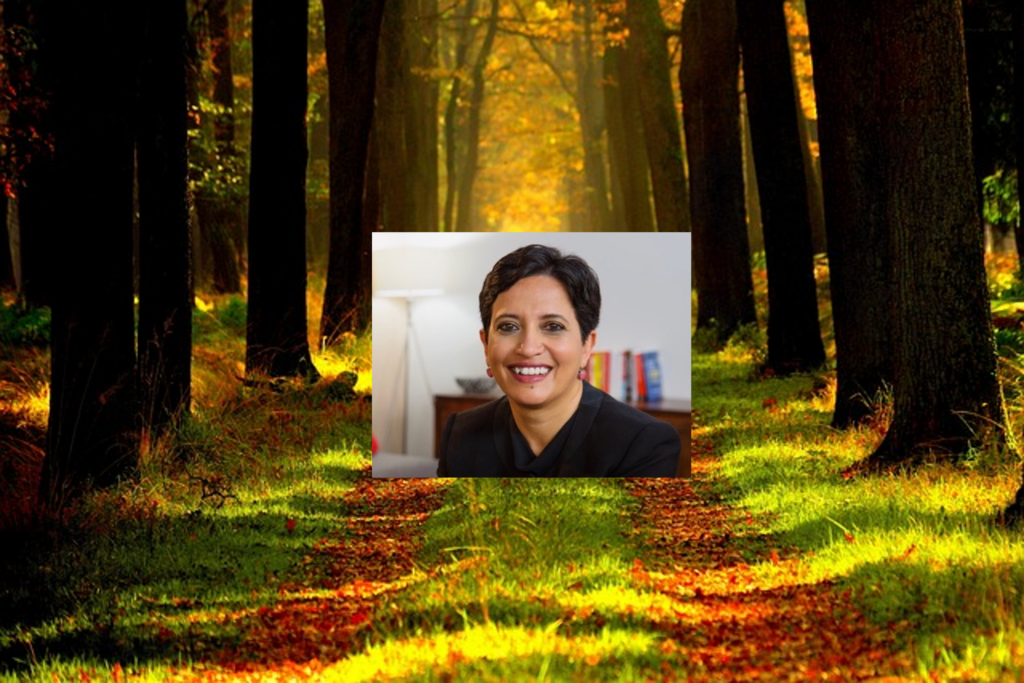Entrepreneur Journeys
The Startup Velocity Question: What Hinders Acceleration in VC Funded Companies?

I have been running 1Mby1M since 2010. I find myself saying to entrepreneurs ad nauseam that VCs want to invest in startups that can go from zero to $100 million in revenue in 5 to 7 years.
Startups that do not have what it takes to achieve velocity should not be venture funded.
Experienced VCs, over time, have developed heuristics to gauge what constitutes a high growth venture investment thesis.
>>>1Mby1M Udemy Courses with Sramana Mitra: Bootstrapping

Over the course of two years, we have released over 70 courses on Udemy with the aim to democratize entrepreneurship education at scale globally. This series of posts aims to help you find the one you need easily and provide you with discount coupons.
>>>Building a Fat Startup in Corporate Training: Karl Mehta, CEO of EdCast (Part 1)
If you haven’t already, please study our Bootstrapping Course and Investor Introductions page.
Serial entrepreneur Karl Mehta is applying consumer education models from MOOCs and such to the world of corporate training. Very interesting spin on online learning.
Sramana Mitra: Let’s start at the very beginning of your personal journey. Where are you from? Where were you born, raised, and in what kind of background?
Karl Mehta: My background is in engineering. I did my undergrad in Computer Science and Electrical Engineering.
Sramana Mitra: First and foremost, where were you born and raised?
Karl Mehta: I was born in Mumbai, India. After getting my undergrad degree, I came here in 1994. It’s been about 20 years in the US. >>>
Featured Videos
Can 1M/1M Help Me Raise Money?
How Does 1M/1M Democratize Entrepreneurship Education?
How Does 1M/1M Democratize Management Consulting?
When Is The Right Time To Join 1M/1M?
Can 1M/1M Help Me With Business Development?
Can 1M/1M Help Me With Market Sizing?
Can 1M/1M Help Me Validate My Product?
Will I Have Private 1-on-1 Sessions In 1M/1M?
How Does 1M/1M Help Entrepreneurs Connect With Silicon Valley?
Mentoring or Consulting?
Why Does 1M/1M Charge $1000 a Year?
Why Does 1M/1M Partner With Local Organizations?
Why Don\’t Mentoring Networks Work?
Why Is It Important To Study With 1M/1M Now?
Dan Stewart Story
Vikrant Mathur Story
Bootstrapping an Ad Tech Company from Paris: Daniel Nathan, CEO of BidMotion (Part 1)
If you haven’t already, please study our Bootstrapping Course and Investor Introductions page.
Europe is imploding. Entrepreneurs are its only hope. Daniel Nathan is building a really cool company based in Paris.
Sramana Mitra: Let’s start at the very beginning of your journey. Where are you from? Where were you born, raised, and in what kind of background?
Daniel Nathan: I was born very close to Paris. I was born in 1988. My parents were not entrepreneurs, but I always wanted to create my own business. I started my first company when I was pretty young. Our city was not such a great city to live in. To go to Paris, you had to take a train. It was pretty dangerous to take that train. >>>
Greece Has A New Atlas: Marine Traffic CEO Demitris Memos (Part 1)
If you haven’t already, please study our Bootstrapping Course and Investor Introductions page.
The morning that Brexit sent shockwaves through the world economy, I spoke with Demitris Memos who is building a nicely scaling, bootstrapped SaaS company from Athens, Greece. It was thrilling to hear a story of success and hope against the larger backdrop of doom and gloom.
Greece and Europe need more of them.
Sramana Mitra: Let’s start at the very beginning of your personal story. Where are you from? Where were you born, raised, and in what kind of background?
Demitri Memos: I’m from Greece.
Sramana Mitra: You grew up in Greece? >>>
From an EIR Experiment to a Fast Growth SaaS Company: Joe Kinsella, Founder and CTO of CloudHealth (Part 1)
If you haven’t already, please study our Bootstrapping Course and Investor Introductions page.
Joe founded CloudHealth as an EIR at a Boston VC firm. Last year the SaaS company had 300 customers. The story explores how he achieved product market fit and found its stride.
Sramana Mitra: Let’s start at the very beginning of your personal journey. Where are you from? Where were you born, raised, and in what kind of background?
Joe Kinsella: I grew up in a little town outside of Syracuse, New York. It’s just a little urban town out in the middle of nowhere. I spent my life right through college in the New York area. I took a Computer Science degree. I noticed that there were a lot of tech companies in Boston and San Francisco. I put a lot of thought into it and decided to head out to Boston and started looking for a job. >>>
A Late Bloomer on Building a Legitimate Unicorn: Veeva Systems CEO Peter Gassner (Part 1)
If you haven’t already, please study our Bootstrapping Course and Investor Introductions page.
Peter Gassner is a self-described late bloomer. In a wonderfully authentic interview, Peter describes here how he turned his middle-age crisis into a multi-billion dollar market cap company. Veeva, in 2016, will do well over $500 million in revenue and trades at a market cap of over $4 billion. There’s nothing foo foo about this company. It’s raw execution. I love the story.
Sramana Mitra: Let’s start at the very beginning of your journey. Where are you from? Where were you born, raised, and in what kind of background? >>>
Building a Billion Dollar Unicorn: Outbrain CEO Yaron Galai (Part 1)
If you haven’t already, please study our Bootstrapping Course and Investor Introductions page.
Yaron came with a clear notion of how he wanted to recommend content and monetize those recommendations. It took, however, many years before the market caught up with his vision. It has now. The company is going gangbusters.
Sramana Mitra: Let’s start at the very beginning of your journey. Where are you from? Where were you born, raised, and in what kind of background?
Yaron Galai: I was raised in Israel. That’s where I grew up most of my childhood and spent my first 30 years. I served in the Israeli Navy for 7 years and then started startups.
Sramana Mitra: What year does that bring us up to? You said you worked in the Navy and then started working on startups, or was some of that interweaved while you were still at the Navy? >>>
A Serial Entrepreneur’s Lessons Learned: .CLUB CEO Colin Campbell (Part 1)
If you haven’t already, please study our Bootstrapping Course and Investor Introductions page.
Colin, in one of his ventures, worked 10 years, and made no money when the company was exited. Subsequently, his perspective has evolved, and in this interview, he offers lessons on what to watch out for.
Sramana Mitra: Let’s start at the very beginning of your personal journey. Where are you from? Where were you born, raised, and in what kind of background?
Colin Campbell: I’m actually a farmer from Canada. It was very tough work. Even though I worked on a farm, I still lived in the suburbs of Toronto. I was able to get the best of both environments. I went to the University of Toronto and graduated from there. As soon as I graduated, I went right back to working in the farm for about four to five months. >>>
The Story of a $9M Lifestyle Business: Kean Graham, CEO of MonetizeMore (Part 1)
If you haven’t already, please study our Bootstrapping Course and Investor Introductions page.
Kean wanted to be able to build a digital business that he could work on from anywhere in the world, a lifestyle business that fulfils a very specific desire. Read his fascinating story, as the business has now started to scale.
Sramana Mitra: Let’s start at the very beginning of your journey. Where are you from? Where were you born, raised, and in what kind of background?
Kean Graham: I was born in Alberta, Canada. My family moved to a small town called Golden, BC when I was eight years old. It’s in the Rocky Mountains of Canada and they started a bed and breakfast in the mountains. We actually lived for five years on solar power. I grew up appreciating having electricity and being conservative and sustainable. From there, I went to Victoria, BC which I now call home. >>>
Connected Medical Devices from France: Visiomed CEO Olivier Hua (Part 1)
If you haven’t already, please study our Bootstrapping Course and Investor Introductions page.
Connected Medical Devices is an emerging trend in Healthcare. Read on to see how a company from France has been navigating and pushing that trend.
Sramana Mitra: Let’s start at the very beginning of your journey. Where are you from? Where were you born, raised, and in what kind of background?
Olivier Hua: I was born in France 58 years ago. I started my career as a banker. After seven years, I decided to become an entrepreneur. We actually bought three companies in the automotive industry and I stayed there for 12 years. Back in the early 2000, the automotive industry was a very traditional business. I wanted to be part of the new things that were happening. I then changed careers and became an investor. I was an investor for 12 years and during that time, I’ve helped several companies grow. >>>
Long Journey Over 20 Years: Paula Tompkins, CEO of ChannelNet (Part 1)
If you haven’t already, please study our Bootstrapping Course and Investor Introductions page.
Paula Tompkins started her bootstrapped digital marketing venture in 1985. She has navigated massive industry level shifts, three significant downturns, and has managed to remain relevant. The company today does $20M+ in annual revenue.
Sramana Mitra: Let’s start at the very beginning of your journey. Where are you from? Where were you born, raised, and in what kind of background?
Paula Tompkins: I was born and raised in Huntington, West Virginia. I was the first of my family to be college-educated. I went to Marshall University. It was a local university in my hometown. I graduated with a Business degree in 1974. My mother was a hairdresser. My father owned a shoe store. My father was a first generation Lebanese. My mother has a multi-generational Irish-English-Welsh background. >>>
